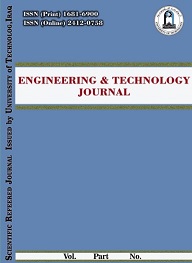Abstract
This paper presents the simulation results of the thermal behavior for an
externally cooled asynchronous electric motor in both steady and transient states
cases. For this purpose, a mathematical model based on the heat equation is first
developed to determine internal thermal sources such as copper, mechanical, and
iron losses. Then, a computer program is developed to numerically simulate the
proposed mathematical model. This program determines the radial distribution of
steady and transient states temperatures and predicts the effect of the ambient
temperature on the transient and permanent temperature distributions. This
makes it possible to calculate the specific speed of the motor as a function of its
rotation speed, the airflow rate, and the pressure dropping at the fan level. The
obtained results show that the engine heating is mainly due to the elements that
show thermal losses by the Joule effect. Moreover, the mitigation of these losses
is strictly related to the specific speed, making it possible to select the right
choice for the engine cooling system.
externally cooled asynchronous electric motor in both steady and transient states
cases. For this purpose, a mathematical model based on the heat equation is first
developed to determine internal thermal sources such as copper, mechanical, and
iron losses. Then, a computer program is developed to numerically simulate the
proposed mathematical model. This program determines the radial distribution of
steady and transient states temperatures and predicts the effect of the ambient
temperature on the transient and permanent temperature distributions. This
makes it possible to calculate the specific speed of the motor as a function of its
rotation speed, the airflow rate, and the pressure dropping at the fan level. The
obtained results show that the engine heating is mainly due to the elements that
show thermal losses by the Joule effect. Moreover, the mitigation of these losses
is strictly related to the specific speed, making it possible to select the right
choice for the engine cooling system.
Keywords
electric motor
External cooling
fan
nodal method.
transient regime
